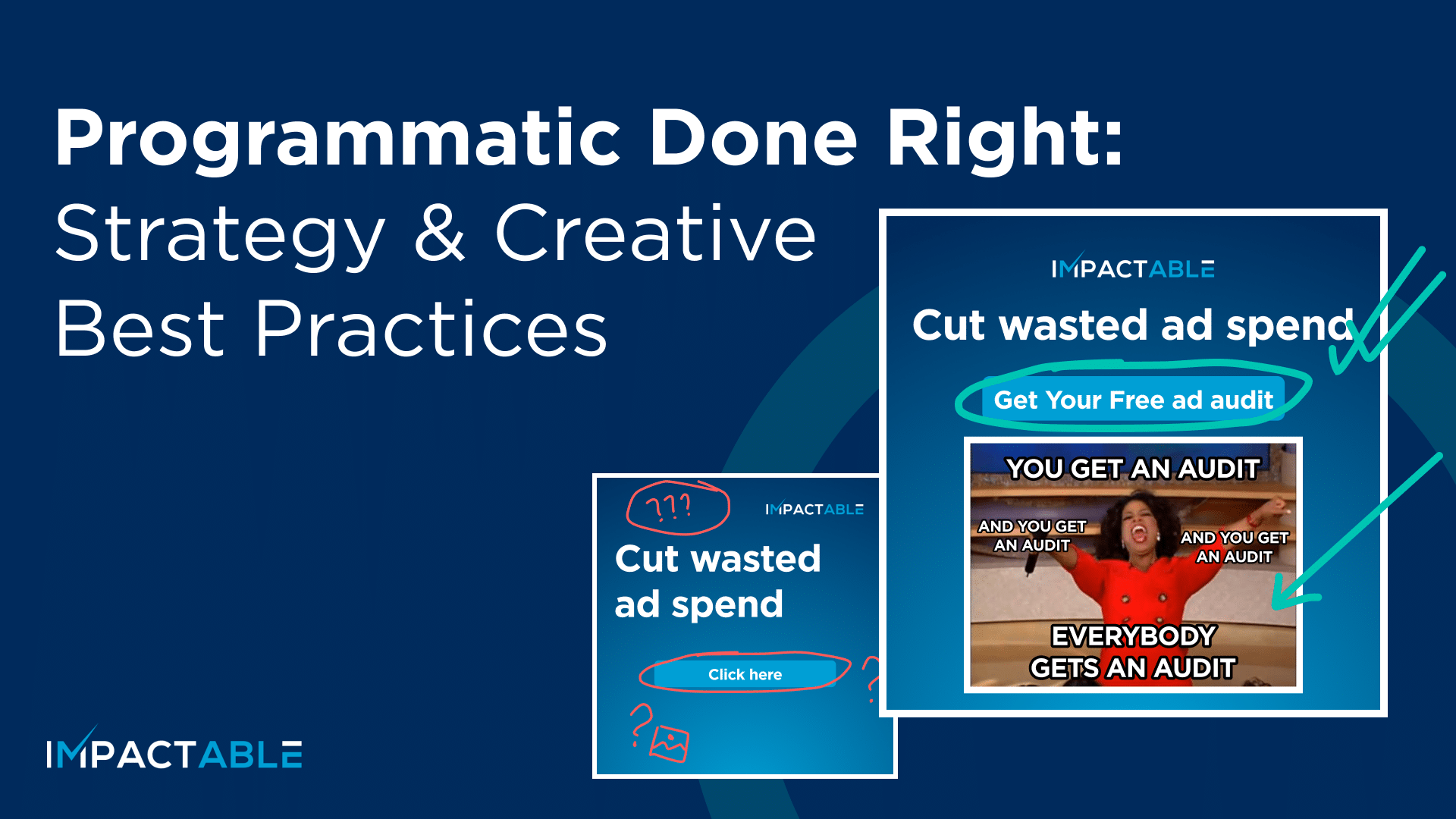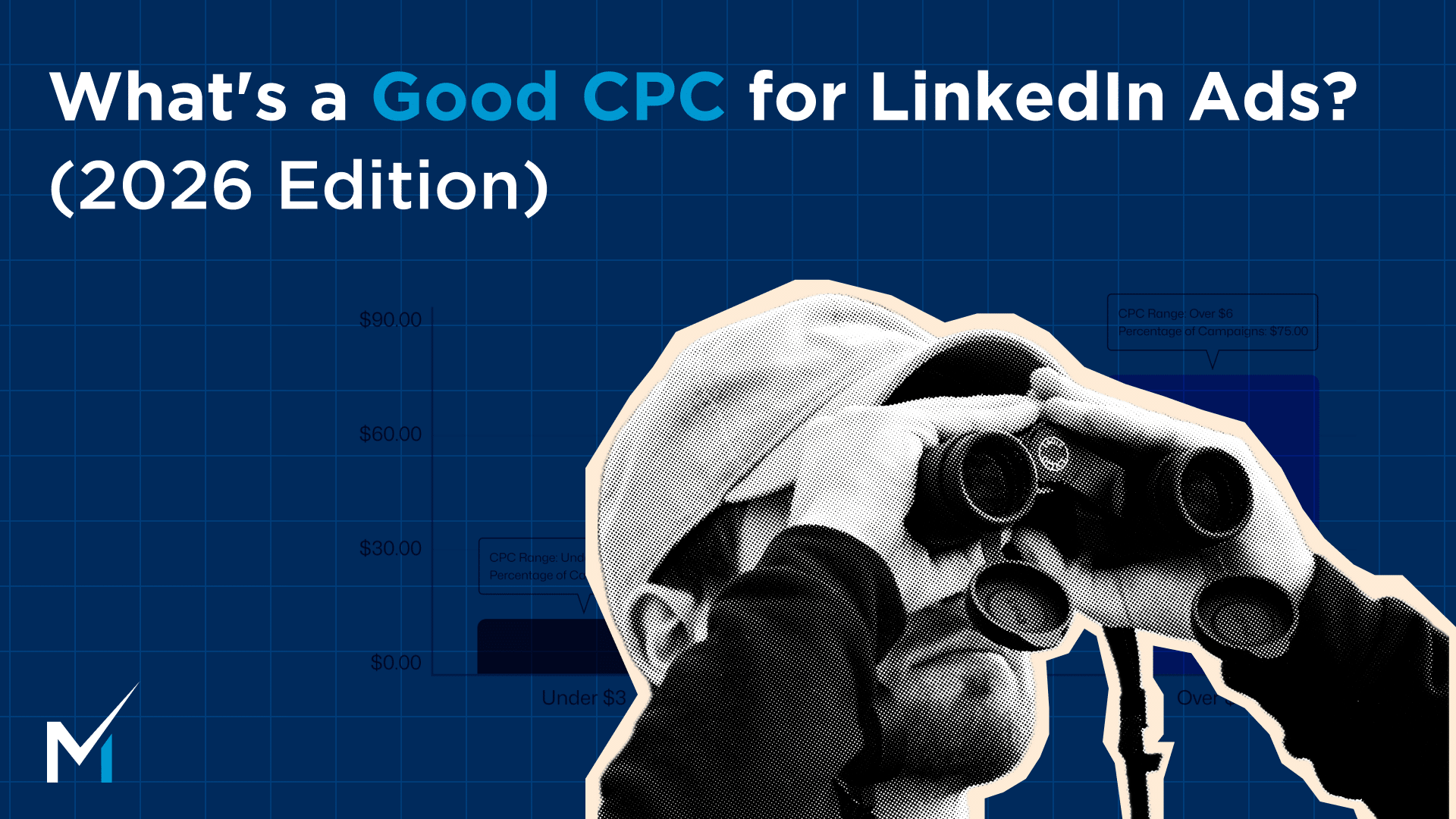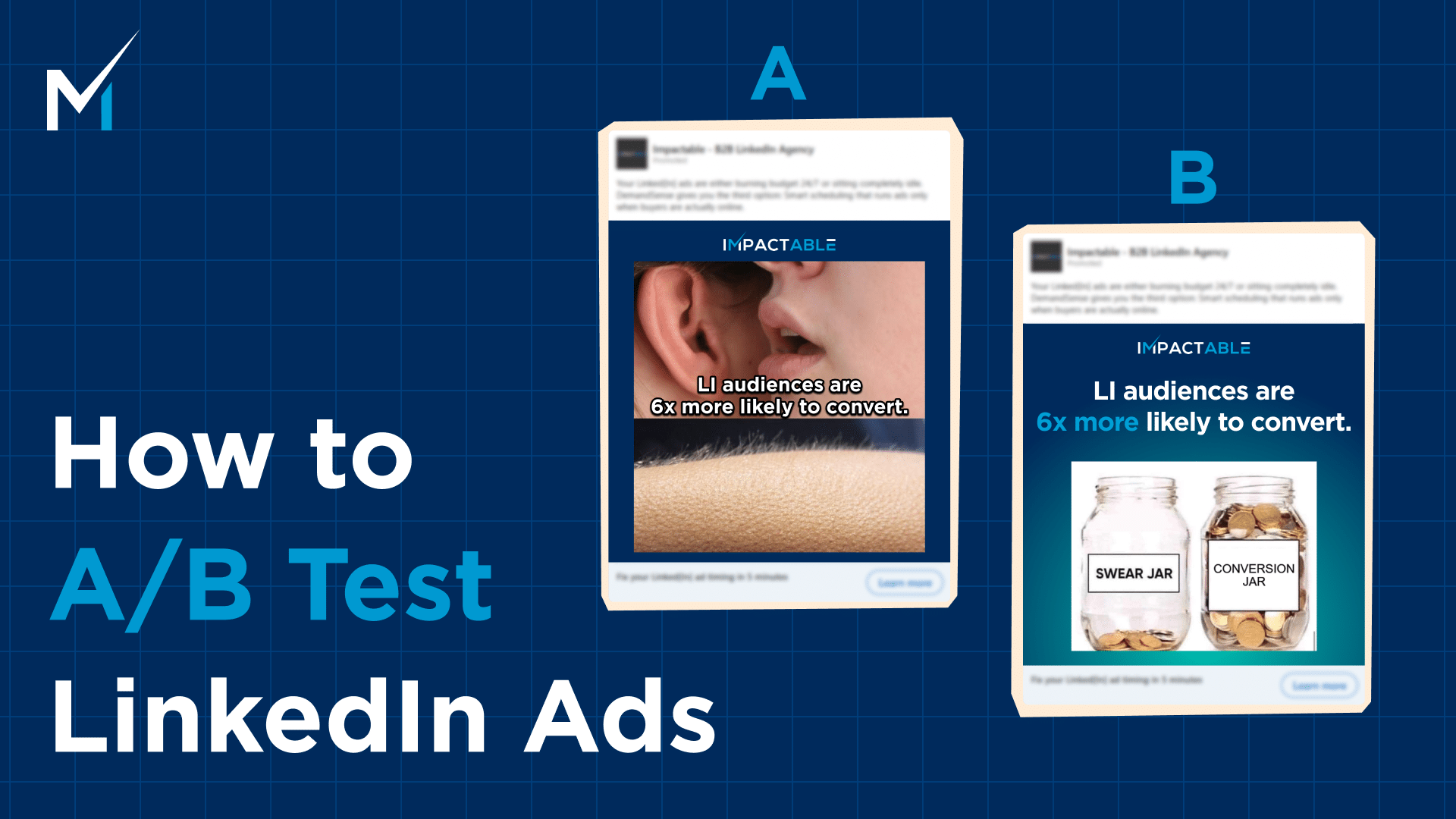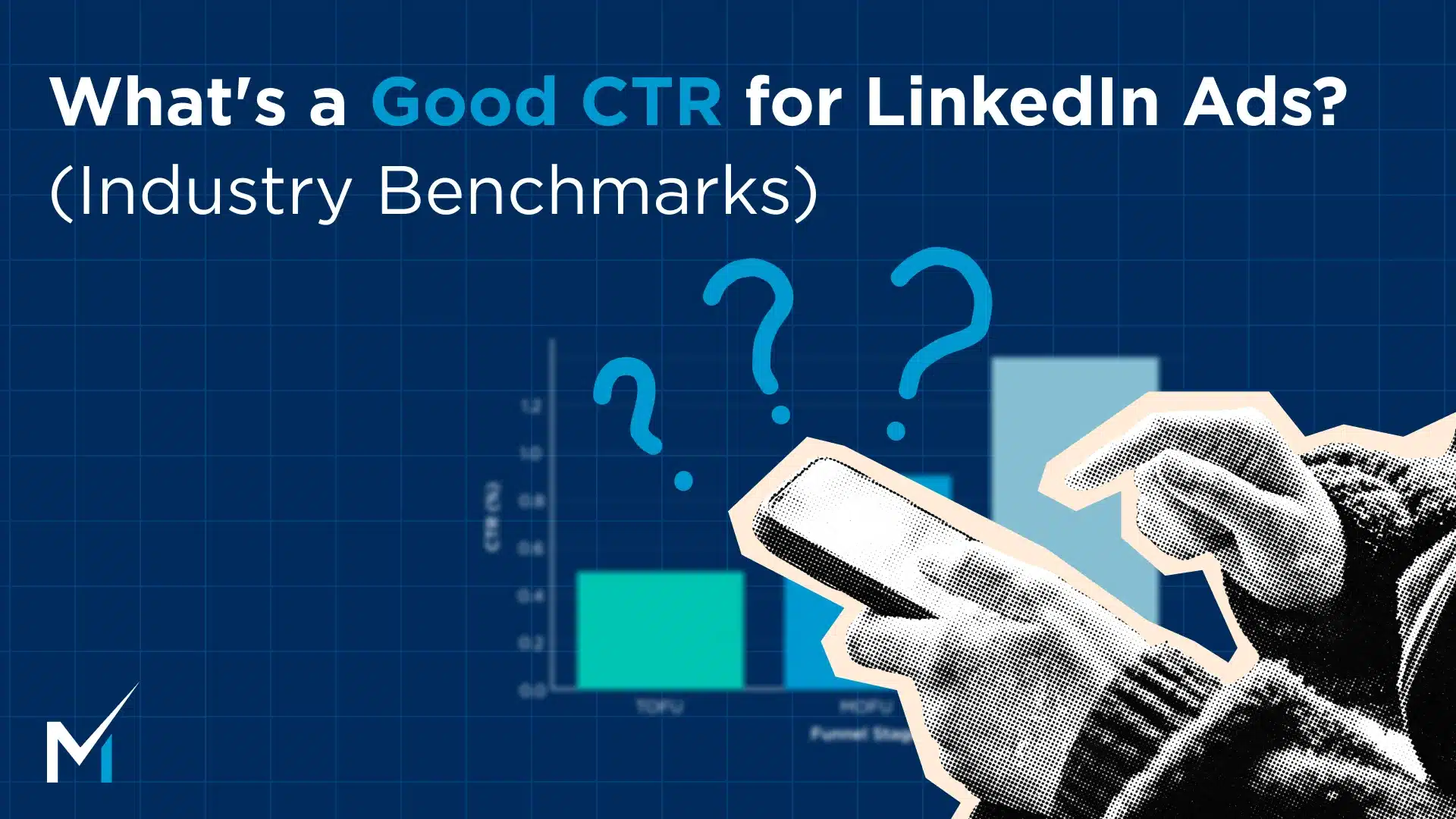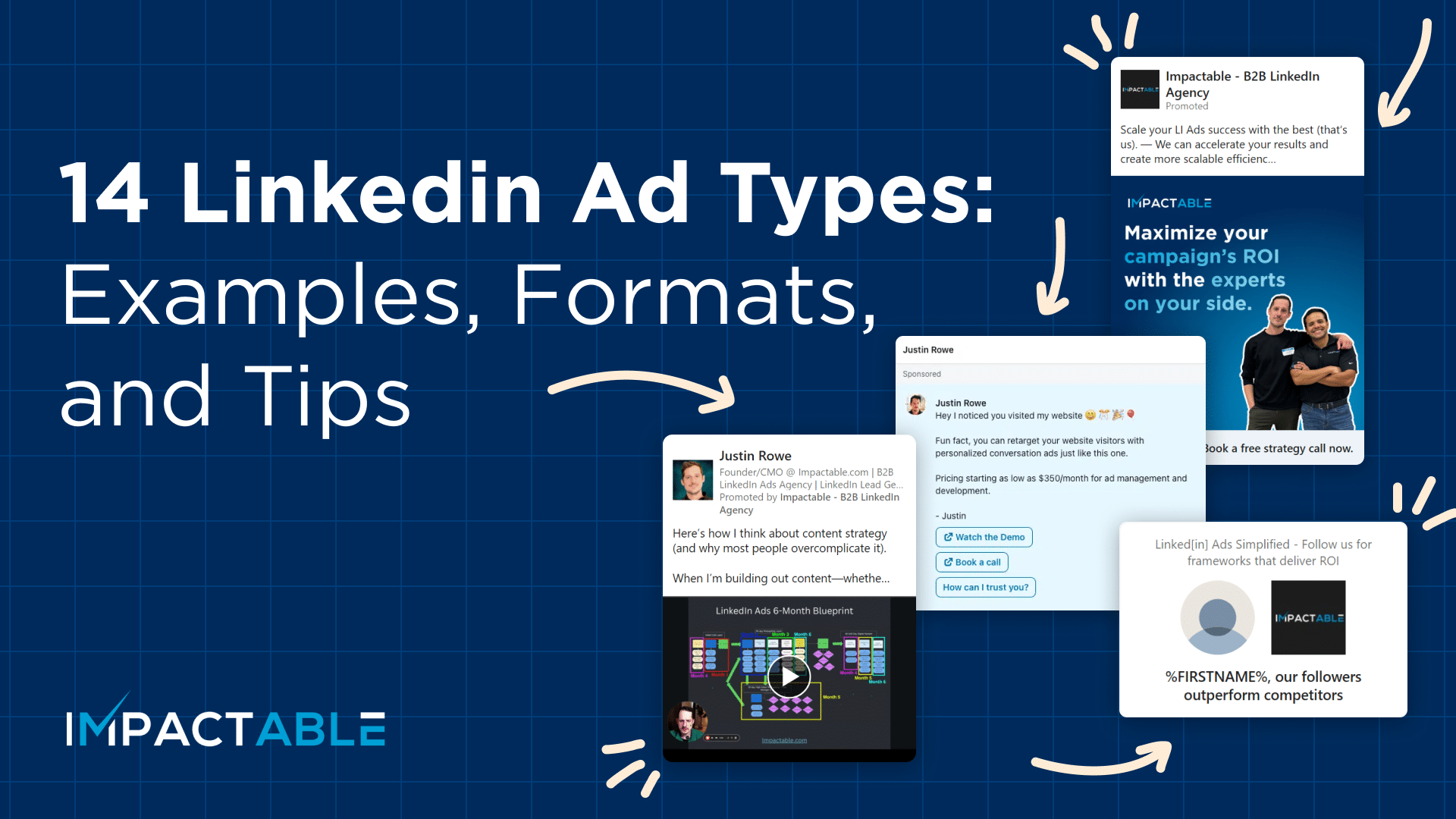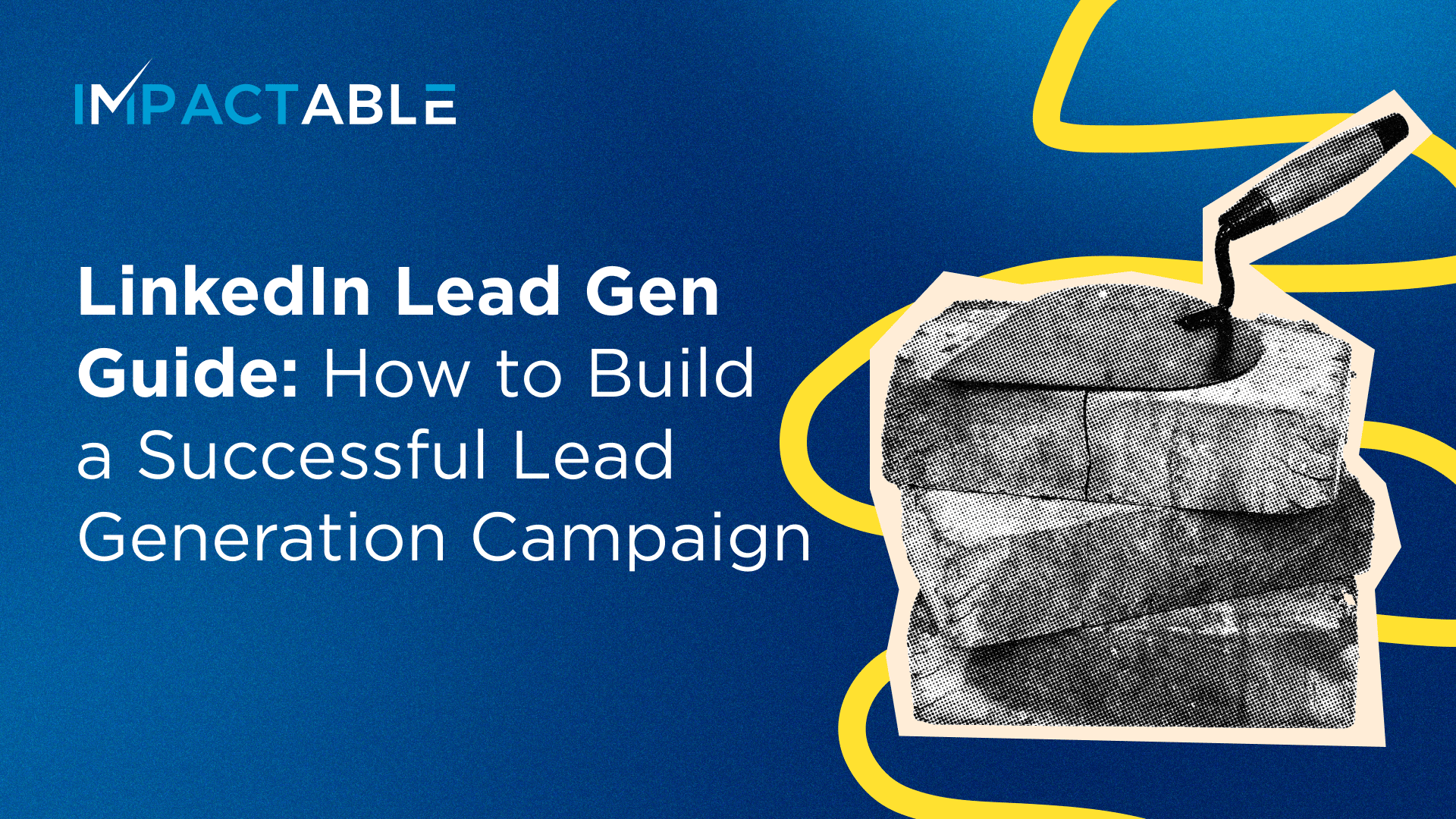If you’re still treating programmatic advertising like some mystical black box where you throw money in and hope good things come out, we need to talk.
After running hundreds of programmatic campaigns and seeing what actually feeds the pipeline rather than just burns budget, we can tell you this:
Programmatic done right is about way more than just setting up some targeting and letting the algorithms do their thing.
The reality? More than 4 in 5 programmatic display ad dollars will transact via programmatic direct and private marketplaces (PMPs) this year and next. Which means if you’re not thinking strategically about both your approach AND your creatives, you’re at risk of remaining invisible to your buyer: all they see will be your competition.
Here’s what we’ve learned about building programmatic campaigns that actually deliver results instead of flashy dashboard metrics.
Why Do Most Programmatic Campaigns Fall Flat?
Before we dive into what works, let’s talk about what doesn’t. We see the same mistakes over and over:
The “Set It and Forget It” Trap
You launch a campaign, check back in a week, and wonder why your cost per acquisition is through the roof. Programmatic isn’t a slow cooker: the approach needs constant fine-tuning to hit peak performance.
Undermining Your Creatives’ Impact
We can’t tell you how many times we’ve seen brilliant targeting strategies completely undermined by generic banner ads that look like they were designed during the Obama administration. Your creative is what actually gets people to stop scrolling and pay attention. And you should treat it that way.
One-Size-Fits-All Mentality
Running the same display ad to someone who’s never heard of you and someone who visited your pricing page? About as helpful as having one greeting card for all the holidays: anyone who receives it won’t get thrilled.
But enough about mistakes. Let’s focus on something more helpful.
Programmatic Strategy Best Practices (That Actually Work)
1. Set Crystal Clear Goals
This sounds basic, but you’d be shocked how many campaigns start with vague objectives like “increase brand awareness.”
And since it’s about as helpful as saying you want to “do better marketing,” here’s what actual goal-setting looks like when you know what you’re doing:
- Awareness campaigns. Target reach and frequency metrics that matter, not vanity impression counts that make your boss feel good but don’t move the needle on pipeline
- App installs. Focus on cost per install AND day-30 retention rates because getting someone to download your app is useless if they delete it after one session
- Product signups. Track cost per lead AND lead-to-customer conversion rates (cheap leads that never buy anything are just expensive entertainment)
- Retargeting. Optimize for return on ad spend, not just clicks (clicks don’t pay the bills, customers do)
The key is choosing metrics that actually tie back to business impact. Because at the end of the day, nobody cares how many impressions you bought if they didn’t drive ROI.
2. Match Your Format to Your Funnel Stage
This is where a lot of campaigns go sideways. Different ad formats work better at different stages of the customer journey, and mixing them up is like bringing a knife to a gunfight.
Top of Funnel (Awareness):
- Native ads work incredibly well here because they don’t scream “advertisement.” Generally, they drive higher buyer intent because they feel like the content people actually want to consume. That’s why they probably don’t immediately hit the “skip ad” reflex
- Use these to educate and build trust, not to hard-sell: nobody wants to be pitched when they’re just trying to read an article
Middle of Funnel (Consideration):
- Video content absolutely crushes it in this stage because you can actually explain complex concepts and show your product in action
- Display ads with real social proof elements (not just “thousands of happy customers” but actual specific results)
- Content-driven native placements that dive deeper into solving specific problems your audience faces
Bottom of Funnel (Conversion):
- Display ads with clear, specific CTAs that tell people exactly what happens when they click
- Retargeting campaigns with product-specific messaging that references what they already looked at
- Programmatic advertising allows for real-time measurement and optimization, so you can double down on what’s working and kill what’s not
3. ABT: Always Be Testing
Here’s something most agencies won’t tell you: your first version is going to suck. And that’s totally fine. In fact, it’s expected.
The magic happens when you commit to testing everything that matters:
- Different audience segments (because your assumptions about who your customers are might be wrong)
- Various bidding strategies (automated vs manual, different bid adjustments for time of day and device)
- Multiple creative variations (headlines, images, CTAs)
- Different landing page experiences (because the ad is only half the battle)
But here’s the crucial part: test systematically, not randomly.
Change one variable at a time so you actually know what’s driving performance improvements. Otherwise you’re just gambling with a bigger budget.
4. Use First-Party Data Like Your Business Depends on It
Because it really, really does.
With third-party cookies set to meet their demise, first-party data is a key differentiator between thriving and barely surviving.
What this actually looks like in practice:
- Upload your customer lists for lookalike targeting (and make sure they’re clean – garbage in, garbage out)
- Use website visitor data for retargeting campaigns that actually reference what people looked at
- Add proper tracking to build rich behavioral segments based on real actions, not just demographics
- Create custom audiences based on engagement levels (email openers, video watchers, content downloaders)
The brands that are building strong first-party data strategies now are going to have a massive advantage as privacy regulations continue to tighten. Everyone else is going to be fighting over scraps.
Having the right programmatic strategy gets your ads in front of the right people. But a compelling creative is what makes them act.
8 Tips for Ad Creatives Your Buyer Won’t Skip
Alright, let’s talk creative. Because honestly, this is where most programmatic campaigns live or die, and where we see the biggest gaps between what agencies promise and what actually gets delivered.
Creatives for Native Ads
Native advertising is having a moment, and for good reason. Native ad click-through rates are roughly 0.3%, while conventional display ad click-through rates are around 0.05%.
What actually works for a native ad creative:
Speak to Pain Points Directly: Don’t dance around the issue like you’re at a middle school dance. If your audience is struggling with something, address it head-on in your headline.
Good: “Why 73% of SaaS Teams Are Switching to Automated Reporting”
Bad: “Discover Our Amazing New Features”
Use Social Proof That Actually Matters: Numbers work, but make them specific and relevant to your audience’s world.
Instead of: “Thousands of happy customers”
Try: “Trusted by 1,000+ SaaS Teams to Cut Reporting Time by 80%”
Nail Your Call-to-Action: Be specific about what happens next and what they’ll get.
- “Book a 15-minute demo” (not just “Learn more” – learn what, exactly?)
- “Get your free audit” (not just “Sign up” – for what?)
- “Download the guide” (not just “Click here” – that’s not a CTA, that’s lazy)
Match the Platform’s Voice: If you’re running native ads on a business publication, your copy should feel authoritative and data-driven. If you’re on a more casual platform, adjust accordingly. Context is everything.
What Works for Display Ads?
Display ads get a bad rap because most of them are terrible. But when done right, they’re incredibly effective for retargeting and bottom-funnel conversions.
The secret? Less is actually more.
Keep Your Message Singular: One ad, one message. That’s it. Period. End of story.
We see way too many display ads trying to communicate three different value propositions in a 300×250 space. Pick the most compelling one and go all-in. Your ad isn’t a brochure.
Let Visuals Do the Heavy Lifting: Your image or video should communicate your value proposition even if someone doesn’t read a single word of your copy.
Create Scannability: People don’t read display ads, they scan them in about 0.3 seconds. Use:
- Bold, contrasting colors that actually stand out from the webpage (not blend into it)
- Minimal text (5-7 words max for headlines – any more and you’ve lost them)
- Clear visual hierarchy that guides the eye from headline to CTA
- White space to avoid the cluttered mess that screams “amateur hour”
Align Everything with Your Landing Page: This seems obvious, but it’s shocking how often it doesn’t happen in the real world.
If your ad says “Get 50% off your first month,” your landing page better prominently feature that exact offer. Any disconnect between the ad and the landing experience kills conversions faster than you can say “bounce rate.”
Programmatic 401: Tactics That Give You an Edge
Dynamic Creative Optimization (DCO)
With dynamic creative optimization (DCO), programmatic ads in 2025 can tailor the visuals, copy, and CTAs based on real-time data without manual versioning.
How does it work?
Instead of creating 20 different ad variations manually, DCO automatically combines different headlines, images, and CTAs based on what’s working for each audience segment.
What to test with DCO:
- Headlines that emphasize different value propositions (cost savings vs time savings vs competitive advantage)
- Images featuring different demographics or use cases that resonate with various audience segments
- CTAs with varying urgency levels (“Get started today” vs “Book a demo” vs “Download now”)
- Different social proof elements (customer logos vs testimonials vs usage statistics)
Cross-Channel Retargeting
Don’t just retarget people who visited your website. Get smarter about it with a retargeting strategy.
Engagement-Based Retargeting: Target people based on how they actually interacted with your content, not just that they showed up:
- Video watchers (25%, 50%, 75% completion rates tell very different stories about interest level)
- Blog readers (time on page and scroll depth separate casual browsers from serious prospects)
- Social media engagers (comments and shares mean more than passive likes)
Sequential Messaging: Tell a story across multiple touchpoints instead of hitting them with the same message over and over
- First exposure: Problem awareness (“Here’s the challenge you’re facing”)
- Second exposure: Solution education (“Here’s how others are solving it”)
- Third exposure: Social proof (“Here’s proof it actually works”)
- Fourth exposure: Direct CTA (“Ready to get started?”)
What to Measure to Know Your Ads Work
Here’s where a lot of programmatic campaigns go wrong: they optimize for the wrong metrics. It’s like judging a restaurant by how many people walk through the door instead of how much money they spend.
Move Beyond Vanity Metrics
Impressions and clicks don’t pay the bills. Focus on what actually matters:
- Cost per qualified lead (not just cost per lead because a lead that never converts is just expensive data)
- Customer lifetime value attribution (understanding which campaigns bring in customers who actually stick around)
- Return on ad spend across the full funnel (not just immediate conversions)
- Brand lift measurements for awareness campaigns (actual recall and intent, not just reach)
Set Up Proper Attribution
With stricter data regulations and the cookie crumble in full effect, measuring campaign success without invasive tracking is a hot topic.
Use multiple attribution models because the truth usually lives somewhere in the middle:
- First-touch for awareness campaigns (what got them in the door)
- Last-touch for conversion campaigns (what closed the deal)
- Multi-touch for the full customer journey (the complete story of how they became a customer)
Track Cross-Device Behavior
People don’t live in single-device silos. Make sure you’re measuring the complete customer journey across all touchpoints.
Common Programmatic Pitfalls (And How to Avoid Them)
Ad Fraud and Viewability Issues
Some sources estimate up to 22% of the global ad spend to be wasted due to ad fraud alone.
How to protect yourself:
- Work with DSPs that offer fraud protection as a standard feature, not an expensive add-on
- Set viewability standards (50% in view for 1+ seconds minimum – anything less is just throwing money away)
- Use third-party verification tools to double-check what your DSP is telling you
- Monitor suspicious traffic patterns (like unusually high CTRs from specific sources)
Brand Safety Nightmares
Nothing ruins a campaign like your ad appearing next to inappropriate content.
Prevention strategies:
- Create comprehensive blacklists (and actually maintain them)
- Use keyword-level content filtering to avoid appearing next to controversial topics
- Work with premium publisher networks that actually vet their content
- Implement real-time brand safety monitoring so you can catch issues before they become PR disasters
Transparency Issues
Over 50% of advertisers expressed feeling neutral or uncomfortable with the levels of transparency in programmatic advertising.
Demand better from your partners:
- Ask for detailed reporting on where your ads actually appear (not just “premium inventory”)
- Understand the full supply chain path (how many hands touched your dollar before it bought an impression)
- Negotiate for log-level data access (so you can see what’s really happening under the hood)
- Use supply path optimization (SPO) strategies to eliminate unnecessary middlemen
The Future of Programmatic (And What It Means for You)
The programmatic landscape is evolving fast, and the brands that adapt early are going to eat everyone else’s lunch. Here’s what’s coming and how to prepare:
- AI-Driven Optimization: AI has been part of programmatic ads for years, but 2025 marks a shift toward explainable AI. Soon you’ll know exactly why certain targeting decisions were made, which makes optimization a whole lot easier.
- Privacy-First Targeting: With cookies going away, contextual targeting is making a comeback. Start testing contextual strategies now while CPMs are still reasonable – because once everyone figures this out, prices are going up.
- Retail Media Networks: More brands are launching their own advertising platforms. These offer incredible targeting capabilities but require careful evaluation of data quality and measurement capabilities. Not all retail media is created equal.
The Bottom Line
Programmatic is a powerful tool that requires both strategic thinking and creative excellence.
The brands that are winning with programmatic aren’t the ones with the biggest budgets. They’re the ones that understand their customers deeply, test relentlessly, and never stop optimizing. They treat programmatic like the sophisticated marketing channel it is, not like a magic money machine.
Want to see how these strategies could work for your specific situation? We’ve helped hundreds of companies build programmatic campaigns that actually deliver ROI, not just pretty reports that look good in board meetings.
The difference between good and great programmatic campaigns often comes down to the details and having a partner who sweats those details so you don’t have to.
Ready to stop throwing money at programmatic and start building campaigns that scale? Let us know we can help you implement these strategies for your business.


